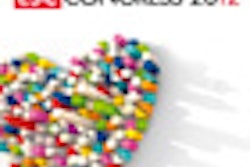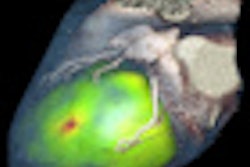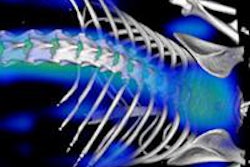Electrocardiogram (ECG) stress testing alone could be used in place of SPECT myocardial perfusion imaging (MPI) in patients who can exercise at a high capacity, said researchers of a study presented 5 May at the International Conference on Nuclear Cardiology and Cardiac CT (ICNC) in Berlin.
Such a diagnostic protocol had no adverse effects on the prognosis of these patients at five years, and has the added benefits of reducing costs and exposing patients to less radiation from the radiopharmaceuticals used in SPECT MPI, according to researchers from Mount Sinai School of Medicine in New York City.
Lead study author Dr. Milena Henzlova, PhD, professor of medicine and cardiology at Mount Sinai, said the group's retrospective analysis shows that few diagnoses of coronary artery disease would be missed using ECG in place of SPECT MPI.
SPECT MPI traditionally has been used for decades to detect ischemia in patients with suspected coronary artery disease. The procedure uses radiopharmaceuticals, such as technetium-99m (Tc-99m) or thallium-201, to image the heart's blood flow at rest and during stress exercise. The goal is to determine if the myocardium is receiving sufficient blood supply and to locate the extent and location of coronary artery disease.
The main disadvantage of SPECT MPI, the authors added, is that patients are exposed to certain levels of radiation from the radiopharmaceutical.
MPI efficacy
Researchers also maintained previous research suggests the results of MPI "added little" to the prognosis of patients who exercise equal to or more than 10 METS (metabolic equivalents, which are the units used to estimate the amount of oxygen used by the body during physical activity) during stress testing.
In addition, previous studies have suggested that exercise treadmill testing alone may be sufficient to predict cardiovascular disease outcome without use of SPECT MPI in low-risk patients. Specifically, Henzlova and colleagues cited a 2011 study that found patients who exercised at greater than 10 METS during stress testing had a very low prevalence of significant ischemia and very low rates of cardiac events during follow-up (Journal of Nuclear Cardiology, April 2011, Vol. 18:2, pp. 230-237).
"With this in mind, we attempted to determine if a provisional injection protocol could be developed in which a patient would not receive an injection of radioisotope, if adequate exercise was achieved without symptoms and a negative electrocardiogram response," the authors wrote.
Study cohort
Henzlova and colleagues reviewed a total of 24,689 patients who underwent SPECT MPI over a 6.5-year period from 2004 to 2010. After excluding patients older than 65 with known coronary artery disease and uninterruptable resting ECGs, the study had 5,352 subjects for analysis.
Patients who would have been considered for an injection of a radioactive contrast agent were able to perform exercise stress, younger than 65, had no known coronary artery disease, and an interpretable electrocardiogram.
The criteria for not injecting patients included a maximum predicted heart rate equal to or greater than 85%, equal to or greater than 10 METS of exercise, no symptoms of chest pain or shortness of breath, and no electrocardiogram changes.
The two groups then were compared based on MPI results and all-cause mortality rates from the U.S. Social Security Death Index.
The review found there were 3,791 (71%) patients who would have received SPECT MPI and 1,561 (29%) individuals who could have avoided an injection. After a mean follow-up of 60.6 months (+/- 21.4 months), 1.1% of the patients in the noninjected cohort had died, compared with 2.2% of the people in the injected group.
Abnormal findings
In addition, the study found perfusion results were abnormal in 5.9% of the patients who did not receive the radiopharmaceutical, compared with 14.4% in the subjects who did receive the agents.
The risk-adjusted survival at the end of the follow-up was 99% in the noninjection group, compared with 97% for patients with normal perfusion in the contrast-receiving group.
"Withholding isotope injections in these selected patients was found to be diagnostically safe with a small percentage of 'missed' abnormal perfusion studies, a very low rate of significant stress perfusion defects, and left ventricular ischemia, and a prognosis which was better than their counterparts who were injected with the isotope," the authors concluded.
Eliminating the need for imaging in 6% of the 9 million SPECT MPI studies performed annually in the U.S., the authors added, would result in significant cost savings and lower the total test time from three hours to approximately one hour.
By individualizing therapy, Henzlova and colleagues added that radiation exposure and costs can be reduced without jeopardizing the quality of the imaging exam and its diagnostic utility, and without adversely affecting the patient.



















